16 Healthy Eating Tips for Quarantine
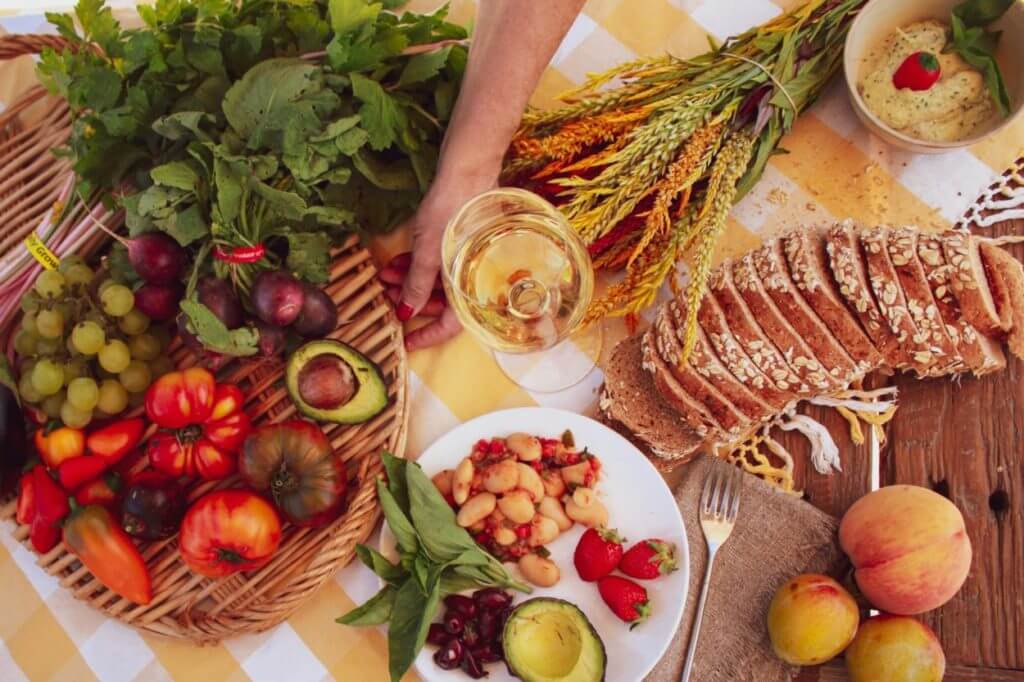
The stress of daily life is mounting for all of us. From supply shortages, to worries over sick loved ones, to plain old cabin fever, one thing is there for us: our kitchens. In many ways, our stay-at-home orders have reinvigorated a newfound joy of cooking and eating. However, it’s also stimulated anxiety for many, as people have had challenges related to stress eating, healthy food access, and optimal nutrition to support good immune health. To be sure, this is not a time to be hard on yourself! It’s a time to feed your mind, body, and soul with good, wholesome food that you can share with those you are sheltering in place with, or donate to a neighbor who is alone and struggling. So, how do you do that well? I asked top dietitians for their best advice on healthful eating during the COVID-19 era.
Stay Well,
Sharon
16 Healthy Eating Tips for Quarantine

1. Set an Eating Schedule. “Get on a general schedule of eating to help prevent random snacking. Give yourself, and your family, a lunch break at the same time every day, just like you would take in a workday. Choose strong, protein rich snacks, especially in the afternoon to prevent swings in energy that initiate cravings,” says Jenna Braddock, MSH, RDN, CSSD, CPT of Make Healthy Easy.
“We eat regularly scheduled meals with a big focus on getting plenty of fruit and veggies throughout the day. We manage to keep our fruit bowl colorful and plentiful right at the center of the table. The most awesome thing is that my kids have taken an interest, not just in baking, but making meals from scratch including homemade pizza dough and homemade pizza sauce from canned tomatoes – even though we actually had frozen pizzas available and marinara sauce. They’ve been watching recipe videos on Alexa and really take an interest in the fine details of cooking from scratch,” says Lauren O’Connor, MS, RDN, RYT of Nutrition Savvy.

2. Don’t Skip Produce. “In my house, we’re cooking a lot more with fresh, canned, and frozen fruits and vegetables. The more fruits and veggies I can weave into my family’s diet right now, the better. We need to stay healthy and fortified, and it’s clear from research that eating fruits and veggies can make you happy! We need happy right now. Our stay-at-home meals rely on what’s on hand in my pantry, fridge and freezer, and we’re working very hard to waste nothing. Food is so precious. My 21-year old son offers to help with dinner prep every night, which is such a joy. Last night, we made an enchilada casserole with corn tortillas, a jar of enchilada sauce, a can of vegetarian bean chili, a 16-ounce bag of frozen chopped spinach, and shredded cheese. Keeping meals simple, pantry based, and asking everyone to pitch in, whether it’s shopping, cooking, or cleaning, has helped to lighten the daily mealtime load,” says Liz Weiss, MS, RDN of Liz’s Healthy Table.
3. Don’t Skip Out on Nutrition. “Eating consistently every 3-4 hours is a great way to manage mindless eating and your energy levels! Aim to eat at least three meals and two snacks in between meals. Set alarms for yourself to take a break from working or doing household chores to nourish your body and don’t forget to stay hydrated! Practice what you would usually do during the day to remember to drink enough water. You can try carrying a water bottle or tumbler throughout the day and see how often you fill it up!” says Samina Qureshi RDN, LD of Wholesome Start Nutrition Counseling.
4. Share Cooking Tasks. “My fiancé and I have been taking turns cooking. Our meals for now are centered around whatever is fresh in the fridge and likely to go bad first, as we don’t want to waste anything. Last night, dinner was roasted onions, sautéed spinach, baked sweet potato, and hardboiled eggs. I’m still following the rules of healthy eating that I always share with my clients: Have a fruit or a veggie at every meal, as well as a whole grain or starchy vegetable, a lean protein, and a healthy fat,” says Amy Gorin, MS, RDN.

5. Snack Smart. “I have three school aged kids at home doing virtual schoolwork, so I make sure I am stocked up on healthy snacks. We eat fresh fruit according to perishability and if it starts looking old, we turn it into something else, either a smoothie, bread, or cobbler. I also make sure we drink plenty of water, as to not confuse hunger with thirst,” says Sarah Pflugradt, MS, RDN of Salubrious RD.
6. Stay Hydrated. “Go easy on caffeine and stay hydrated. It’s easy to drink coffee, tea or other caffeinated drinks all day to keep you going, but don’t forget water. I suggest 16 ounces per meal and at least eight 16-ounce servings in between, especially if you’re exercising,” says Lisa Andrews, MEd, RD, LD of Sound Bites Nutrition.
“When you find that you are stressed and constantly going for food instead of stop, take a glass of water and listen to your body to see if you are truly hungry. If that does not work, try removing yourself from the kitchen. Find a task that will distract your mind and your hands. Maybe you have a closet you have been meaning to clean but haven’t had the time or you can sit down and play a game or a puzzle,” says Jeanette Kimszal, RDN, NLC.
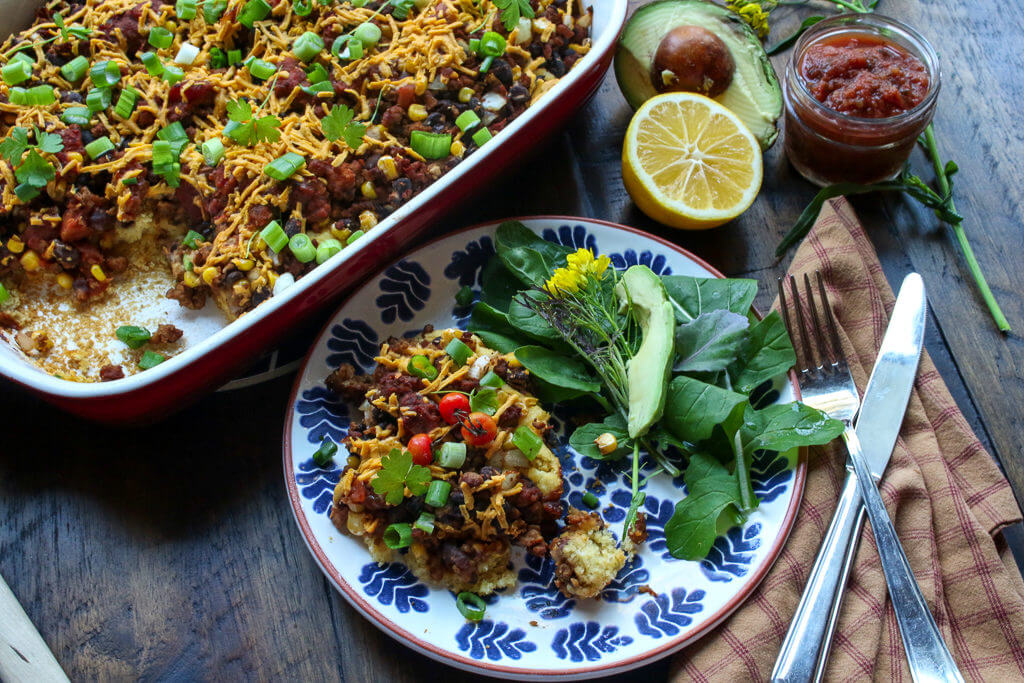
7. Turn to Your Freezer. “While fresh produce may be harder to stock right now, don’t forget about frozen produce! Even just adding a microwaved bag of frozen broccoli or vegetables to a meal can add so many nutrients without much cooking involved,” says Sarah Schlichter, MPH, RDN of Bucket List Tummy.
“Frozen veggies are a savior. To avoid endless trips to the grocery store, stocking up on a variety of assorted frozen mixed veggies makes it super easy to add veggies to every dinner without much prep time. I’ve been adding them to pasta and chicken dishes to help round out a meal with color—and antioxidants,” says Lisa Young, PhD, RDN of Dr. Lisa Young.
8. Get Children Involved in Meals. “With four kids homeschooling and me and my husband working from home, the most significant thing I did was have my kids create a chore chart and a meal chart. Little kids can cook and load dishwashers, and even fold laundry too; even if they just make avocado toast for lunch, it is still helpful that mom does not have to make every single meal! I won’t say it is going perfectly smoothly, but I will say my children are definitely learning how to cook and even using math to scale the recipes they make,” says Bonnie Nasar RDN of Nasar Nutrition.
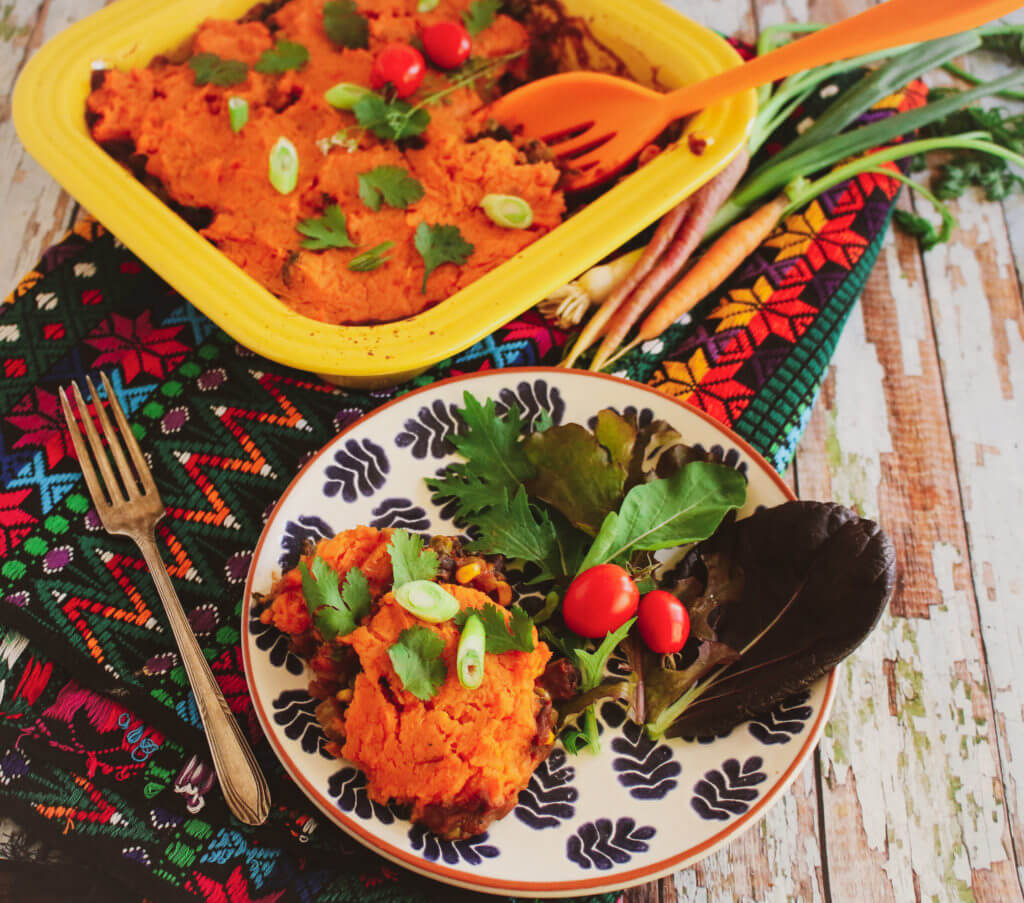
9. Prioritize Long Lasting Produce. “When shopping for groceries, choose fresh produce that will last at least two weeks. For example, root veggies, squashes, and citrus fruits are easy choices that last a long time! In addition to frozen and canned fruit and veg, you can eat a variety of tasty, healthy fruits and vegetables without having to restock so frequently!” says Bri Bell, RD of Frugal Minimalist Kitchen.
10. Plan Meals to Avoid Frequent Shopping. “We have been meal planning and are trying to have a set routine even amidst this quarantine. We are trying to meal plan for two weeks at a time so we don’t have to run to the grocery store so much, and we are using a lot of shelf stable lentils, beans, soy chunks to minimize store trips. We are also hydrating a lot and trying to enjoy having meals together as a family more, which had become difficult with the kids’ schedules,” says Moushumi Mukherjee, MS, RDN.
11. Eat Mindfully. “It’s easy to wander in and out of the kitchen all day and graze on whatever you have stashed up. However, this can also lead to overeating and I’ve even heard it called the ‘quarantine fifteen.’ Instead set hours for breakfast, lunch, and dinner and snacks. That way you also minimize the mess in your kitchen if you live with other family members and keep dishes under control. If you have a few members in your family who eat snacks, then make a snack hour. Make a yogurt bar with chopped nuts, fruit, and granola and set it in one location or make a DIY trail mix,” says Toby Amidor, MS, RD, CDN, FAND.
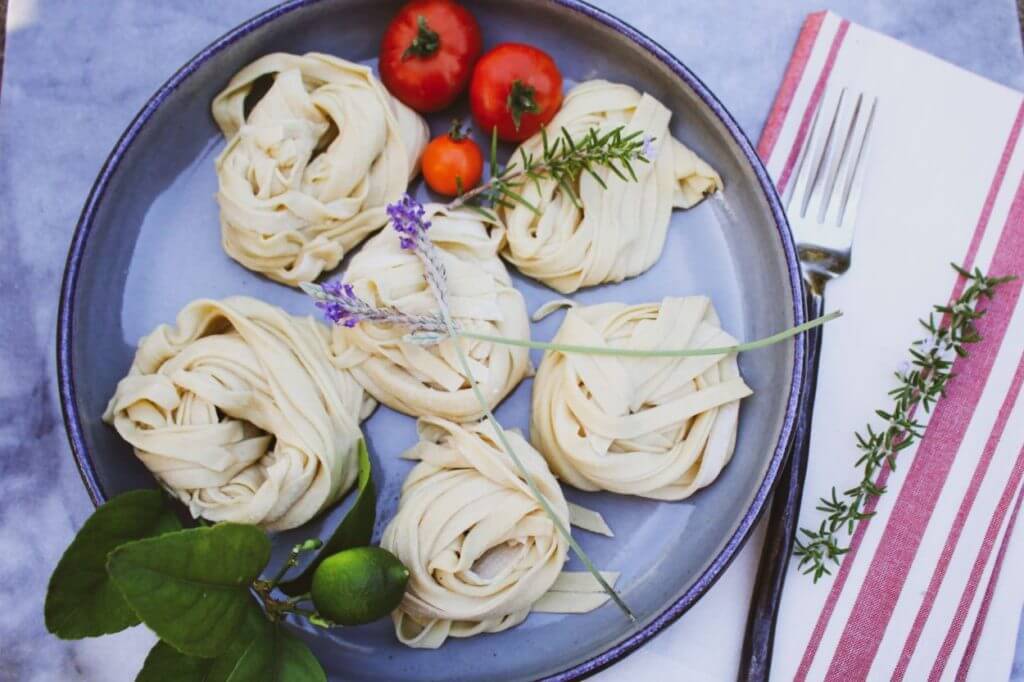
12. Have Fun Cooking. “For those of us fortunate to be able to work from home, it is a good time to cook. We have more time from not commuting, and there is no after school running around to kids’ activities. You can make some of those recipes you’ve saved to try one day. Baking yeast breads from scratch, homemade stock and soups, spaghetti sauce, homemade pasta: enjoy reading cookbooks and finding new family favorites!” says Melissa Altman-Traub MS, RDN, LDN.
13. Load Up on Vitamin C. “Supporting our immune system goes beyond drinking orange juice all day. Other food sources of vitamin C are strawberries, broccoli, brussels sprouts, kiwi and just eating the orange itself! Kefir, described as a yogurt drink, has been shown to support our immune system as well. Give it a try in your next fruit/veggie smoothie,” says KeyVion Miller RDN, LD/N of The Miller’s Kitchen.
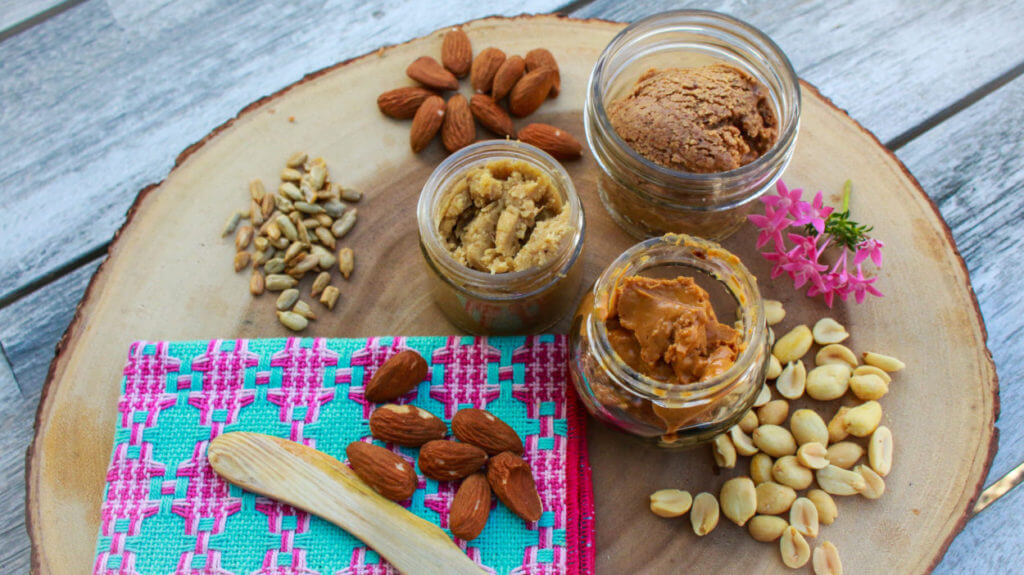
14. Make Some Good Daily Habits. “Right now, one of my go-to daily foods is nuts or peanut butter. Nuts and nut butters are a great staple food that can fill you up to avoid stress and bored eating, but also provide some nutrients that may be missing that you need for immune health like zinc and vitamin E. Don’t forget fruits and veggies–see if there is a local farmer’s co-op that can help you support local farmers. Lastly, get outside, if it’s allowed. Fresh air and exercise helps reduce stress–sunshine provides vitamin D important for immune health,” says Bridget Swinney, RD, of Eat Right Mama.
15. Don’t Waste Food. “My daughter made a list of all foods by expiration date, dairy, produce, grains, etc. Then we meal plan around which foods expire first, regardless of being in the mood for something else! At first, it was tough but now were are getting into a rhythm and seriously committing to avoiding food waste, while feeling grateful for what we have,” says Melissa Halas, MA RDN CDE of Super Kids Nutrition.
16. Don’t Go Overboard on Alcohol. “Beer, wine, and cocktails temporarily ease the stress of worrying about the coronavirus and social distancing. But don’t overdo it. In addition to adding extra calories, alcoholic beverages interfere with the restful sleep you need right now. Sleep plays a role in supporting immunity, and getting enough is also related to weight control,” says Elizabeth Ward, MS, RDN of Better Is The New Perfect.
For more pantry tips, check out:
13 Nutritionist Tips for Organizing Your Pantry
5 Plant-Powered Pantry Foods I Can’t Live Without
6 Dietitian Tips for Eating Out of Your Pantry
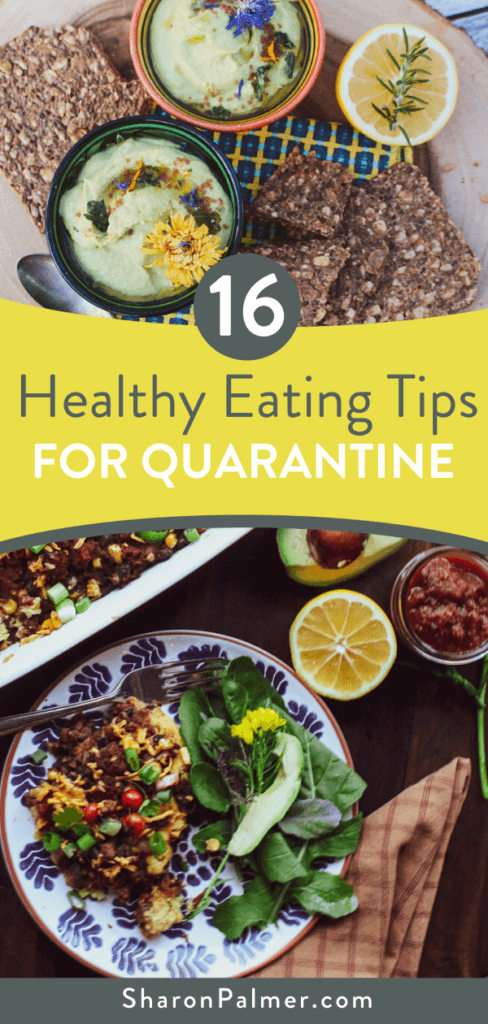



It’s a really interesting idea to eat a small meal every 4 hours or so in order to avoid bad snacking. My spouse and I want to start eating more home-cooked meals so we are being healthier. We love the idea of finding some recipes that our ancestors would have made so that we can try something new.
Great article. Healthy diet active malnutrition and cover diseases like obesity, heart disease, diabetes, cancer, and stroke. Mostly many people’s diets are of more saturated fat, trans fats, sugars, and more sodium than fruits, vegetables, and nutrient fiber.
It’s a really interesting idea to eat a small meal every 4 hours or so in order to avoid bad snacking. My spouse and I want to start eating more home-cooked meals so we are being healthier. We love the idea of finding some recipes that our ancestors would have made so that we can try something new.
Wow such a mind-blowing comprehensive deep detailed blog post it has the huge value for people who are interested or already in the healthy food.